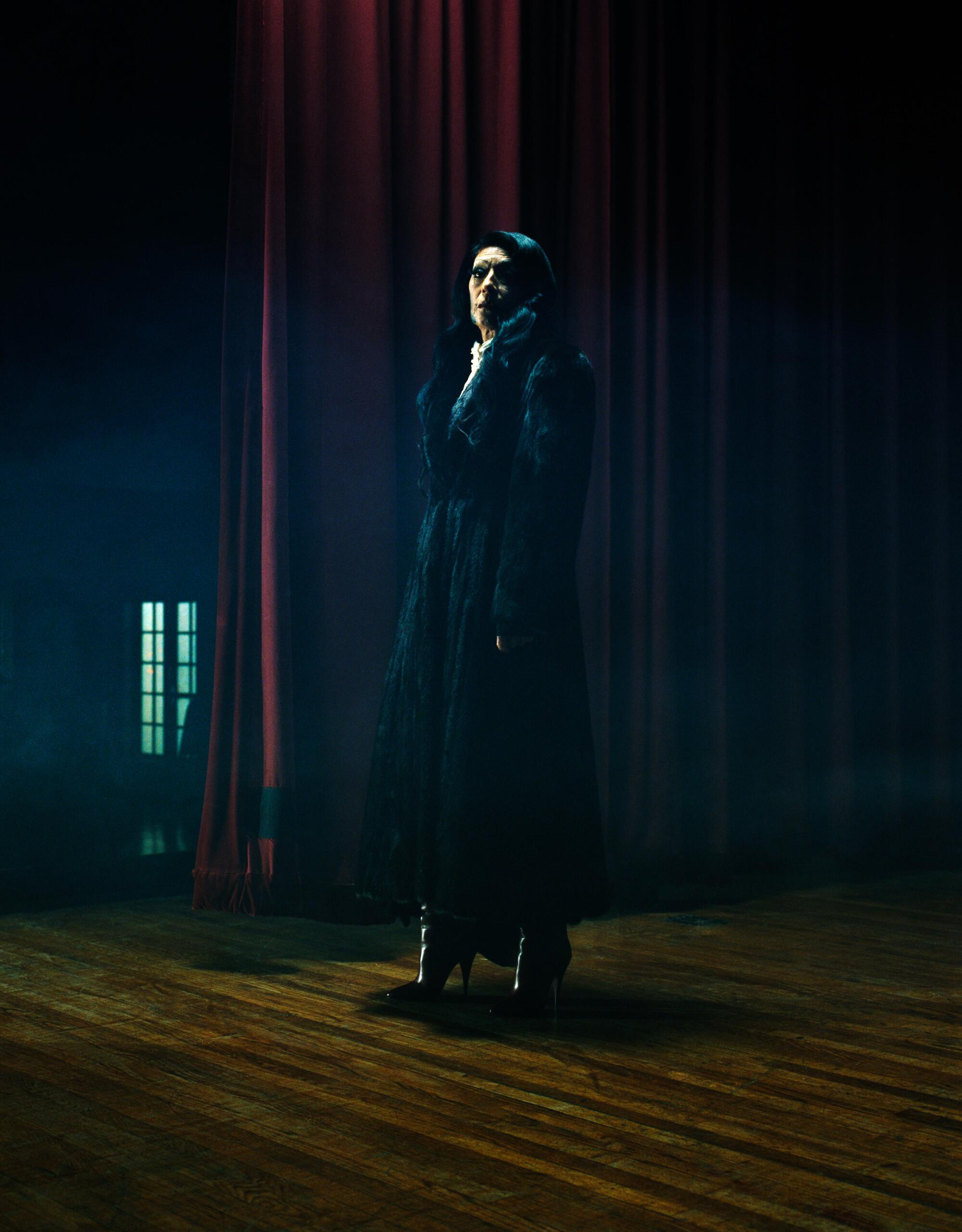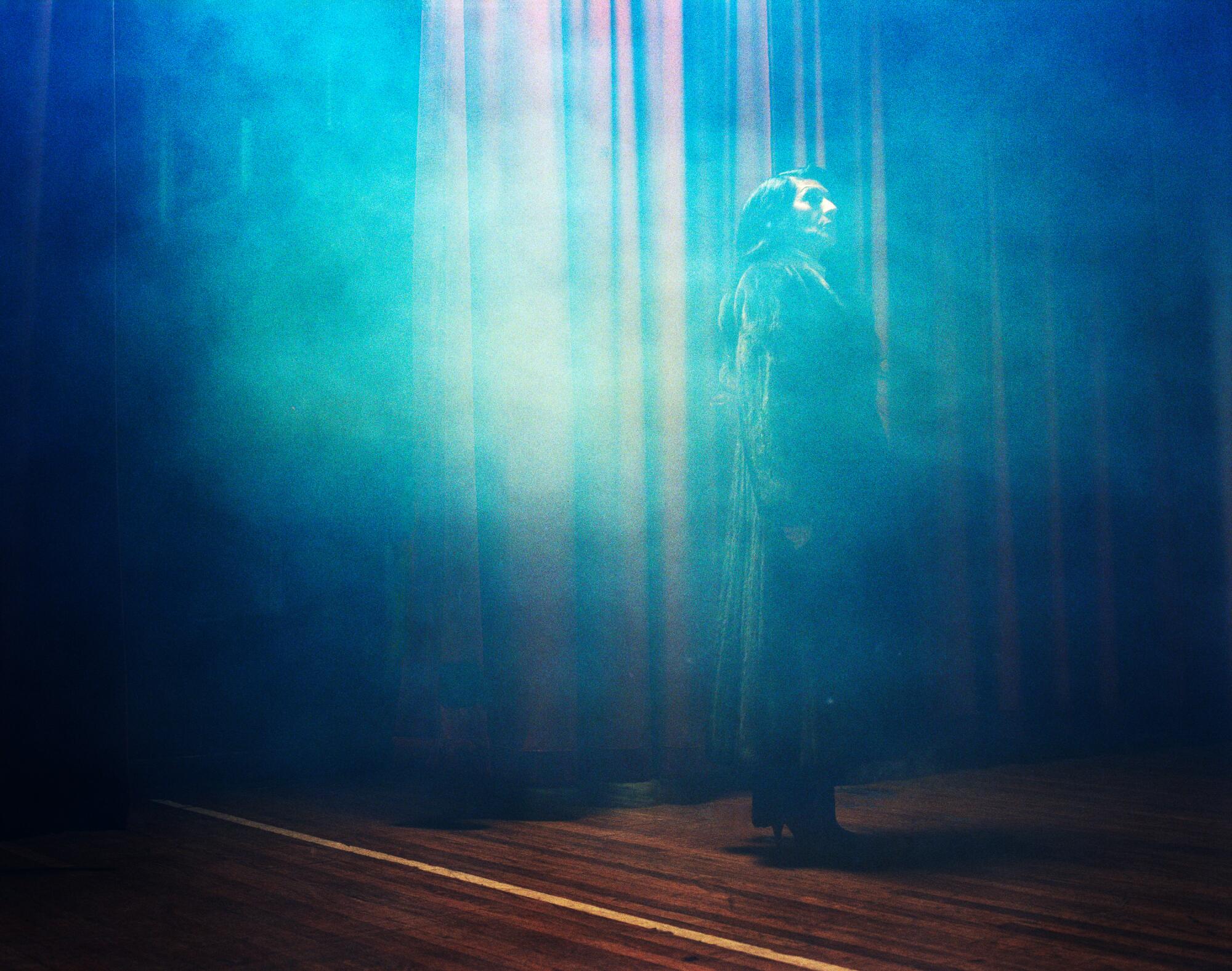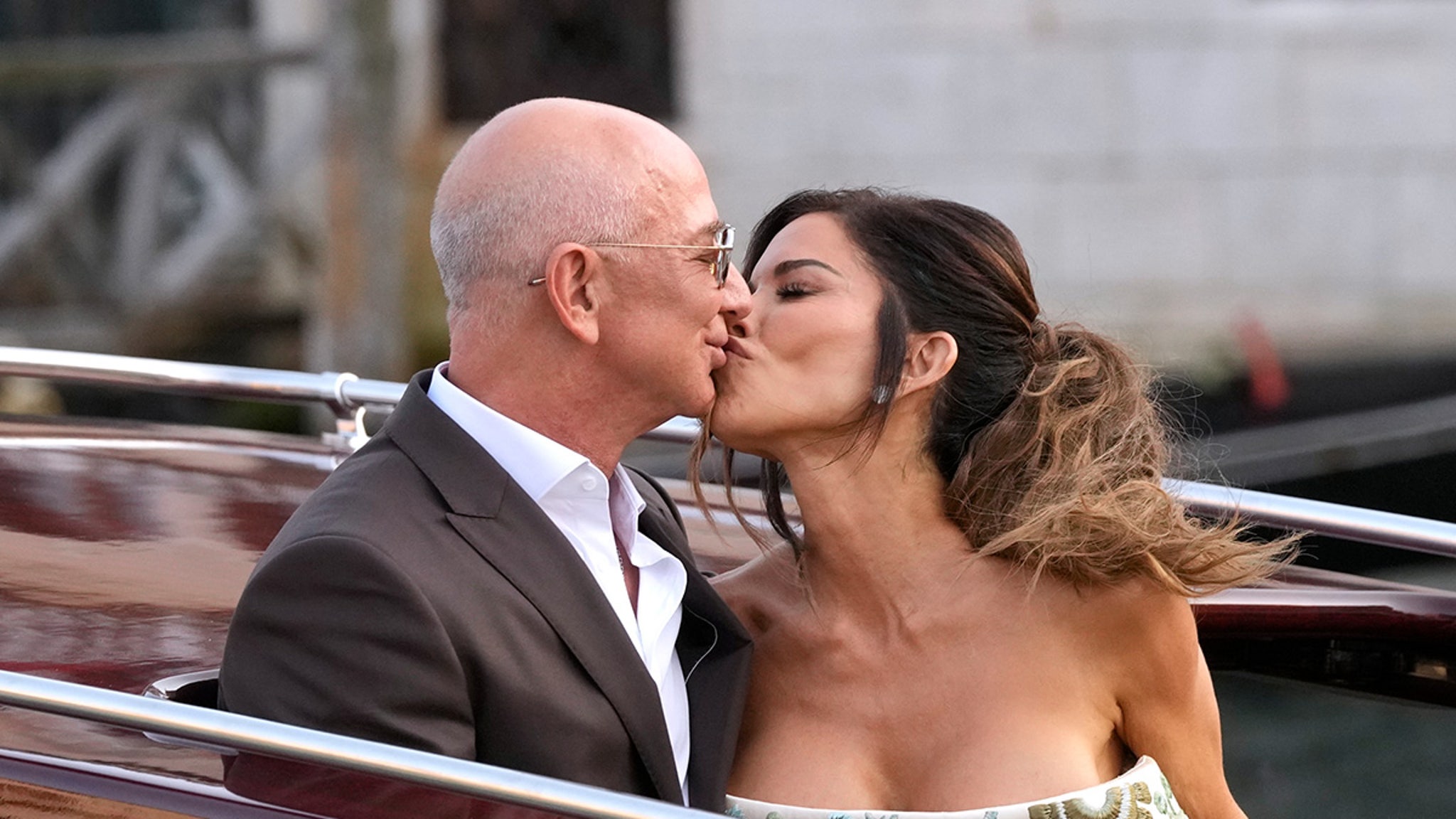Lifestyle
Grief doesn’t end or stop. But there’s a comfort in that

This story is part of Image’s March Devotion issue, exploring various forms of reverence, love and worship. For the issue, the artist Fox Maxy directed an editorial on grief, shot by Devyn Galindo, and made an accompanying video. In this as-told-to interview, Maxy gives the backstory.
Grief is the biggest all-consuming thing going on right now, and not just in my life but in the zoomed-out version of the world. It’s a really heavy atmosphere right now. And I thought, how can I delve into grief and tell a story that is close to me but also has elements of fantasy, has elements of playfulness and beauty as well?
This story starts right after a funeral. It’s an auntie and a niece in the images, and the niece is on her own after the funeral. It’s the first moments in which she’s not surrounded by people, and she can reflect on what’s going on and how she’s going to move forward without her auntie. The auntie visits her in a form — it’s scary at first because the niece is thinking, “I know she’s not really here, but she’s here.”

In the second part of the story, they’re coming toward each other, crying. Both of them are crying because the auntie’s going on her journey, but the niece also is moving forward without her auntie. It’s not saying goodbye, necessarily, because they’re not really going to ever part, but they aren’t going to be together in a physical way anymore. So, there is that sadness, that overwhelming feeling of loss.

Noelle wears vintage plastic knit dress, Agent Provocateur lingerie, custom-made jewelry by Chloé Maratta.

Rosie wears Versace dress, Saint Laurent heels.
Then, the ending of the story is really sweet — it’s a relief to have somebody have your back on the other side. The auntie’s going to always be there for her niece as an ancestor. It comes kind of in a circle, it doesn’t end. The grief has a purpose.
I just lost an auntie recently. I deal with a lot of grief about losing my mom too, even though that was a long time ago. And my grandma was huge — she had a big part in raising me, and I lost her too. The more people you lose, you start thinking about all of them. You start thinking, “What are they all doing up there?” It was really special to be able to create something that’s personal, but it’s also a fiction, it’s not totally real. There’s room to play.



Rosie wears Stacey Nishimoto top.
It’s not a glamorous thing to constantly tell people, “Oh, I’m sad.” Nobody wants to hear about that, and it’s also awkward. People don’t always know how to comfort each other. I think people have good intentions, but there’s not a lot of education on how we can support each other in times of grief. People always say, “Time heals everything.” But I don’t know if grief ever really goes. It can be transformed into something else, into different types of feelings or energies, but I don’t think it can ever just end or stop. So, for me, the ending of the story here, I love the idea that it’s not a goodbye. It’s like, “I’m going to see you when it’s my time. I’m going to see you later.” And there’s a comfort in that.

Rosie (left) wears vintage fur coat from the Corner Store, Lanvin blouse, Saint Laurent boots, custom veil by Chloé Maratta. Noelle wears vintage dress set, Pleaser heels.
I always think about this other place where these people are now, and I just think of sparkles. I think of glitter. I think of a place where there isn’t pain, where there isn’t the way of being here on the physical Earth. Glam was really important to be a part of this visual story. And the stylist Angelina [Vitto] went above and beyond because she understood that there’s a way of honoring the characters. When you doll them up, it’s like seeing them at their best in a beautiful way.



I thought the space, [the Highland Park Ebell Club], was perfect to tell the story. With me being from a film and art background, it was interesting to be in a theater and have that as the setting. Even just the idea of the curtains closing and not fully being closed, there’s this opening. And with the darkness, I wanted it to be separate from a reality that we’re familiar with. Spookiness is always fun. And it’s just this other world. When you’re overtaken by grief, it’s a dark time, and you might not have the clearest state of mind. That felt important to me to have a little bit of experimenting in terms of the quality of the image and maybe having some things blur and stuck in the shadows. You can’t really see everything, but that speaks to how we move when we’re grieving.
As told to Elisa Wouk Almino

Creative direction Fox Maxy
Photography Devyn Galindo
Styling Angelina Vitto
Production Rafaela Remy Sanchez
Models Rosie Cowboys, Noelle Martinez
Hair Sully Layo
Makeup Valerie Vonprisk
Styling assistant Jessie May
Location Highland Park Ebell Club

Lifestyle
Asked to flag 'negative' National Park content, visitors gave their own 2 cents instead

Signs like this one in the Presidio of San Francisco, part of the Golden Gate National Recreation Area, have been going up around the country in response to President Trump’s executive order titled “Restoring Truth and Sanity to American History.”
Chloe Veltman/NPR
hide caption
toggle caption
Chloe Veltman/NPR
Signs installed earlier this month in national parks across the country asking visitors to share feedback on “any signs or other information that are negative about past or living Americans” are eliciting all sorts of reactions. But comments viewed by NPR don’t provide the requested feedback.
Visitors to the Presidio of San Francisco, a National Historic Landmark and former military garrison with a complex history seemed unimpressed by the small black-and-white sign placed on a coffee table at roughly shin-level near the Presidio’s welcome center on a recent morning.

“The point of going to a park is to enjoy nature, not to whistleblow something that casts the American people in a bad light,” said Evan Sutterfield, a San Francisco school teacher enjoying a day out on his summer break.
“I think you need to tell the whole story,” said Russ Harwell, visiting from Charlotte, N.C. “If you’re gonna write it out of history, then you’re doomed to repeat it.”
Linda Mosinian from Milwaukee, Wis. added: “I think this is a waste of time.”
‘Restoring Truth and Sanity to American History’
The signs, which invite people to send comments anonymously using a QR code, phone number, email or web address, have appeared in response to an executive order President Trump issued in March titled “Restoring Truth and Sanity to American History.” It specifically calls for the removal of content from monuments and properties within the Department of the Interior that “inappropriately disparages Americans past or living.”
In a statement to NPR, the Department of the Interior said: “The effort ensures public lands reflect an accurate portrayal of American history and heritage.”

NPR reviewed dozens of comments submitted from June 4 to 12 regarding signs placed in parks across the country. According to The Coalition to Protect America’s Parks, a multi-page PDF containing these comments was leaked by a national park employee who took screenshots of the comments pages on their computer and then shared the PDF with parks advocacy groups.
None of the submitted comments suggest the parks need to change their depictions of people or history.
Some are supportive. “The park rangers and volunteers go above and beyond to tell the full American story,” stated a comment about Catoctin Mountain Park in Maryland.
Others say national parks should reflect even more of the country’s difficult history. “Need more history on how black and indigenous people have been exploited,” one comment stated.
Differing opinions
That’s not to say all visitors are happy about the historical information shared at parks.
Department of the Interior spokesperson J. Elizabeth Peace said after Trump issued the executive order — but before the signs went up — her department had already started receiving feedback from national park visitors via the department’s email address.
Peace said one example relates to Capitol Reef National Park in Utah, where a visitor reported that a souvenir postcard mislabeled a nearby landmark and appeared to copy text from Wikipedia without attribution.
Another came from a visitor concerned about a video on the website of the Washington Monument in Washington, D.C., which inaccurately stated George Washington ended his inaugural oath with a phrase historians widely agree lacks definitive sourcing.

The phrase in question was “So help me God.”
Neither of these comments related to Trump’s executive order about content that, “inappropriately disparages Americans past or living.” But Peace said they were nevertheless useful.
“Both examples provided were reviewed by the National Park Service and appropriate corrective or clarifying action was taken,” Peace said. “These examples underscore the value of public feedback in helping us maintain historical accuracy across our sites and materials.”
Accuracy challenges
Accuracy isn’t a given, because feedback can be submitted through a general website or email address accessible from anywhere in the world.
“What would stop somebody with an agenda from posting fake comments?” said Clara Wooden, a member of the board of The Coalition to Protect America’s National Parks. “People at both ends of the ideological spectrum can game the system without even setting foot in a national park.”
In response to these concerns, the Department of the Interior’s Peace told NPR comments are individually reviewed before being routed to appropriate subject matter experts for further evaluation and validation. “This manual review process helps ensure that the feedback we work with is both relevant and credible,” she said.
Lifestyle
Jeff Bezos, Lauren Sanchez Kiss & Wave En Route to Wedding Rehearsal

Jeff Bezos, Lauren Sanchez
Smoochin’ Like the World Is Watching!!!💋
Rehearsal, Here We Come!!!
Published
Jeff Bezos and Lauren Sanchez are kissing like there’s no tomorrow — playing lovestruck teens while cruising to their fairy tale wedding rehearsal in Venice … while all the world watches.
The PDA was full throttle — the couple were smooching and waving like royalty from their water taxi Thursday, with Jeff grinning ear to ear and Lauren beaming just as hard … looking surprisingly comfortable for someone dripping in extreme, skintight couture

Lauren was serving bombshell — rocking a sculpted off-the-shoulder midi with a metallic bodysuit that snatched her waist to perfection. If there was a pre-wedding health kick, it definitely did the job!

Jeff was giving full billionaire swagger — wearing a sleek suit, crisp wedding shirt, and looking every bit the mega-rich groom-to-be as they made their grand glide through Venice.
Of course, the A-list crew — including Orlando Bloom, Tom Brady and more — were also hopping on water taxis, ready to kick off the ultra-glam wedding weekend.
Our sources tell us after the wedding, the guests will be whisked off to a mystery island near Venice. Clearly, this is a one heck of a Bezos-level blowout!
Lifestyle
In a first-of-its-kind decision, an AI company wins a copyright infringement lawsuit brought by authors

The Anthropic website and mobile phone app are shown in this photo on July 5, 2024. A judge ruled in the AI company’s favor in a copyright infringement case brought last year by a group of authors.
Richard Drew/AP
hide caption
toggle caption
Richard Drew/AP
AI companies could have the legal right to train their large language models on copyrighted works — as long as they obtain copies of those works legally.
That’s the upshot of a first-of-its-kind ruling by a federal judge in San Francisco on Monday in an ongoing copyright infringement case that pits a group of authors against a major AI company.
The ruling is significant because it represents the first substantive decision on how fair use applies to generative AI systems.
Fair use doctrine enables copyrighted works to be used by third parties without the copyright holder’s consent in some circumstances such as illustrating a point in a news article. Claims of fair use are commonly invoked by AI companies trying to make the case for the use of copyrighted works to train their generative AI models. But authors and other creative industry plaintiffs have been pushing back with a slew of lawsuits.
Authors take on Anthropic
In their 2024 class action lawsuit, authors Andrea Bartz, Charles Graeber and Kirk Wallace Johnson alleged Anthropic AI used the contents of millions of digitized copyrighted books to train the large language models behind their chatbot, Claude, including at least two works by each plaintiff. The company also bought some hard copy books and scanned them before ingesting them into its model.
“Rather than obtaining permission and paying a fair price for the creations it exploits, Anthropic pirated them,” the authors’ complaint states.
In Monday’s order, Senior U.S. District Judge William Alsup supported Anthropic’s argument, stating the company’s use of books by the plaintiffs to train their AI model was acceptable.
“The training use was a fair use,” he wrote. “The use of the books at issue to train Claude and its precursors was exceedingly transformative.”
The judge said the digitization of the books purchased in print form by Anthropic could also be considered fair use, “because all Anthropic did was replace the print copies it had purchased for its central library with more convenient space-saving and searchable digital copies for its central library — without adding new copies, creating new works, or redistributing existing copies.”
However, Alsup also acknowledged that not all books were paid for. He wrote Anthropic “downloaded for free millions of copyrighted books in digital form from pirate sites on the internet” as part of its effort “to amass a central library of ‘all the books in the world’ to retain ‘forever,.’”
Alsup did not approve of Anthropic’s view “that the pirated library copies must be treated as training copies,” and is allowing the authors’ piracy complaint to proceed to trial.
“We will have a trial on the pirated copies used to create Anthropic’s central library and the resulting damages, actual or statutory (including for willfulness),” Alsup stated.
Bifurcated responses
Alsup’s bifurcated decision led to similarly divided responses from those involved in the case and industry stakeholders.
In a statement to NPR, Anthropic praised the judge’s recognition that using works to train large language models was “transformative — spectacularly so.” The company added: “Consistent with copyright’s purpose in enabling creativity and fostering scientific progress, Anthropic’s large language models are trained upon works not to race ahead and replicate or supplant them, but to turn a hard corner and create something different.”
However, Anthropic also said it disagrees with the court’s decision to proceed with a trial.
“We believe it’s clear that we acquired books for one purpose only — building large language models — and the court clearly held that use was fair,” the company stated.
A member of the plaintiffs’ legal team declined to speak publicly about the decision.
The Authors’ Guild, a major professional writers’ advocacy group, did share a statement: “We disagree with the decision that using pirated or scanned books for training large language models is fair use,” the statement said.
In an interview with NPR, the guild’s CEO, Mary Rasenberger, added that authors need not be too concerned with the ruling.
”The impact of this decision for book authors is actually quite good,” Rasenberger said. “The judge understood the outrageous piracy. And that comes with statutory damages for intentional copyright infringement, which are quite high per book.”
According to the Copyright Alliance, U.S. copyright law states willful copyright infringement can lead to statutory damages of up to $150,000 per infringed work. The ruling states Anthropic pirated more than 7 million copies of books. So the damages resulting from the upcoming trial could be huge.
The part of the case focused on Anthropic’s liability for using pirated works is scheduled to go to trial in December.
Other cases and a new ruling
Similar lawsuits have been brought by other prominent authors. Ta-Nehisi Coates, Michael Chabon, Junot Díaz and the comedian Sarah Silverman are involved in ongoing cases against AI players.
On Wednesday, U.S. District Judge Vince Chhabria ruled in favor of Meta in one of those cases. A copyright infringement lawsuit was brought by 13 authors including Richard Kadrey and Silverman. They sued Meta for allegedly using pirated copies of their novels to train LLaMA. Meta claimed fair use and won because the authors failed to present evidence that Meta’s use of their books impacted the market for their original work. However, the judge said the ruling applies only to the specific works included in the lawsuit and that in future cases, authors making similar claims could win if they make a stronger case.
“ These rulings are going to help tech companies and copyright holders to see where judges and courts are likely to go in the future,” said Ray Seilie, a lawyer based in Los Angeles with the firm Kinsella Holley Iser Kump Steinsapir, who focuses on AI and creativity. He is not involved with this particular case.
“ I think they can be seen as a victory for the AI community writ large because they create a precedent suggesting that AI companies can use legally-obtained material to train their models,” Seilie said.
But he said this doesn’t mean AI companies can immediately go out and scan whatever books they buy with impunity, since the rulings are likely to be appealed and the cases could potentially wind up before the Supreme Court.
“ Everything could change,” Seilie said.
-

 Arizona1 week ago
Arizona1 week agoSuspect in Arizona Rangers' death killed by Missouri troopers
-

 Business7 days ago
Business7 days agoDriverless disruption: Tech titans gird for robotaxi wars with new factory and territories
-

 Business1 week ago
Business1 week agoProtesters are chasing federal agents out of L.A. County hotels: ‘A small victory’
-

 Technology1 week ago
Technology1 week agoSenate passes GENIUS stablecoin bill in a win for the crypto industry
-

 Technology1 week ago
Technology1 week agoOpenAI awarded $200 million US defense contract
-

 Politics1 week ago
Politics1 week agoCuomo team denies AOC’s claim he’s using NYC mayor run as a springboard to the White House
-

 News1 week ago
News1 week agoVideo: Inside Trump’s Shifting Stance on Iran
-

 Technology7 days ago
Technology7 days agoSpaceX Starship explodes again, this time on the ground
















